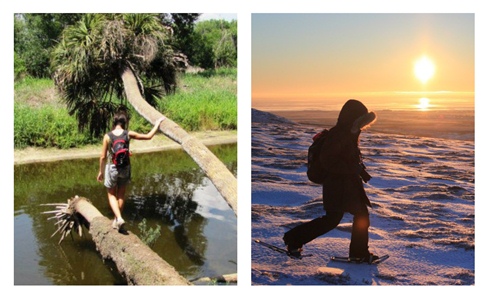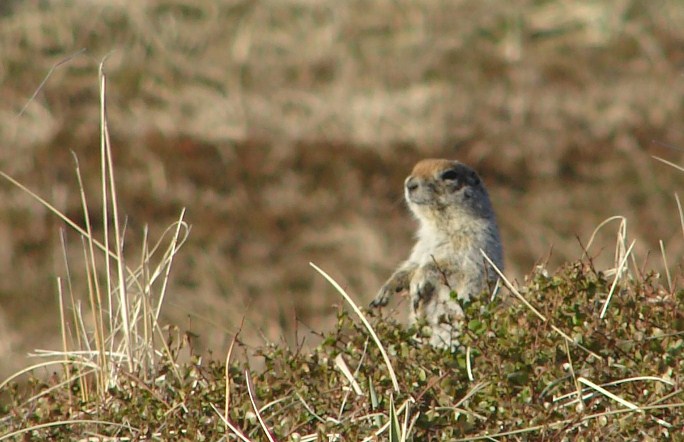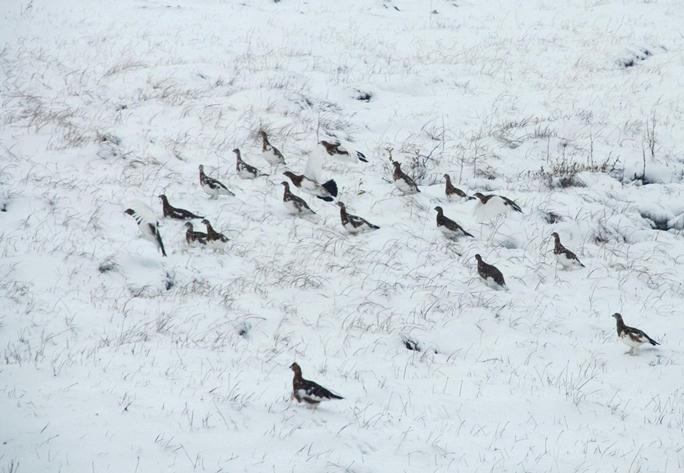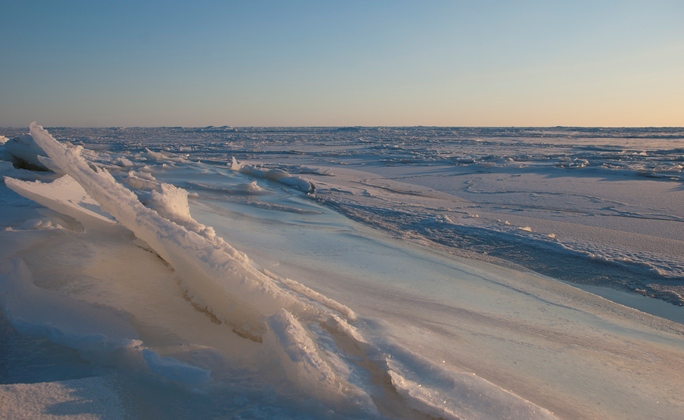What kind of natural environment did you grow up in? Have you ever considered how it might have affected the way you see the world today? I never thought about it much before I left Florida to work at Bering Land Bridge National Preserve, but I now realize what a huge difference it made in my perspectives on the land, climate, culture, flora, and fauna that shapes every aspect of life.
People say that Florida has no seasons, but I always beg to differ. Sure, it may be green year round and the temperature rarely dips below 30 on the coldest days of winter, but if you spend enough time outdoors anywhere you can detect even the most subtle of changes. Transitioning to Alaska, however, I now understand "real" seasonal change, the effects of the curvature of the earth, of northern latitudes, of mountains and tundra. I still concede that Florida has its own repertoire of variation, but getting to experience a place as extreme as northwest Alaska brings new insight to my understanding of nature.

As winter sets in, I am beginning to see for myself how everything here is intricately connected to the arctic environment. The waves of the Bering Sea have been silenced with the arrival of sea ice. With the salmon runs now over, a new generation of pinks, chums, reds, silvers, and kings are waiting to hatch upriver and begin their life's journey out to sea and back again over the next few years. And I can still see remnants of this season's fall berries leaving little pink stains in my foot prints in the snow.

It still amazes me how so many forms of life survive the winters out here. Take the Arctic ground squirrel (Spermophilus parryii) for example. I saw these guys scurrying around the tundra all summer long, but now they're all deep in hibernation for the next 7-8 months. Even crazier: their body temperatures will drop from the normal 98 degrees to less than 32 degrees, the lowest temperature ever measured in a mammal. Apparently they survive this by shaking and shivering for about 15 hours every couple weeks to bring their body temperatures back up to normal before freezing again.

Those funny ptarmigan too - they have the best insulation of any Alaskan bird species, growing thick white feathers that help them camouflage in the snow and keep their bodies at over 100 degrees even in negative air temperatures. Sea mammals such as seals, whales, and walruses have a thick layer of blubber to keep warm, and believe it or not, polar bears (Ursus maritimus) actually have black skin and transparent fur to absorb sunlight, yet blend in with the ice.
As humans, we have our own ways of surviving the winter as well. Many locals don fur-lined parkas or kuspuks, and some wear traditional sealskin mukluk boots. Dried and frozen fish, seal oil, muktuk (whale blubber and skin), ptarmigan, moose, caribou, and muskox will be consumed throughout the season. People of all ages look forward to traditional treats like akutuq, or "Eskimo ice cream," made from reindeer fat, seal oil, and wild berries. Not surprisingly, all these traditional food items contain high levels of many of the nutrients our bodies lose during the coldest and darkest months of the year, such as fats, vitamins A, C, and D, protein, and iron.

Perhaps I missed out on some things by growing up in the subtropics: no sledding, or snowball fights, or "White Christmases," or slipping on icy sidewalks. But I think there's also something to be said for experiencing these things as a young adult; to see the world with childlike wonder anew, to ponder the mysteries of hibernating ground squirrels, to revel in the splendor of the northern lights, and to be truly thankful for places like Bering Land Bridge that protect and celebrate little pockets of awesomeness like this on our planet.
Bio
My name is Andrea Willingham and I am the SCA Multimedia and Graphic Design Intern for Bering Land Bridge National Preserve. Over the next 9 months, I will be creating the new visitor's guide and brochures for BELA, as well as helping manage the preserve's social media. Originally from Florida, I graduated from Eckerd College in 2012 with degrees in Environmental Studies and Anthropology, so coming to work at BELA has been an amazing opportunity to pursue both of these fields and contribute my work to the National Park Service.
